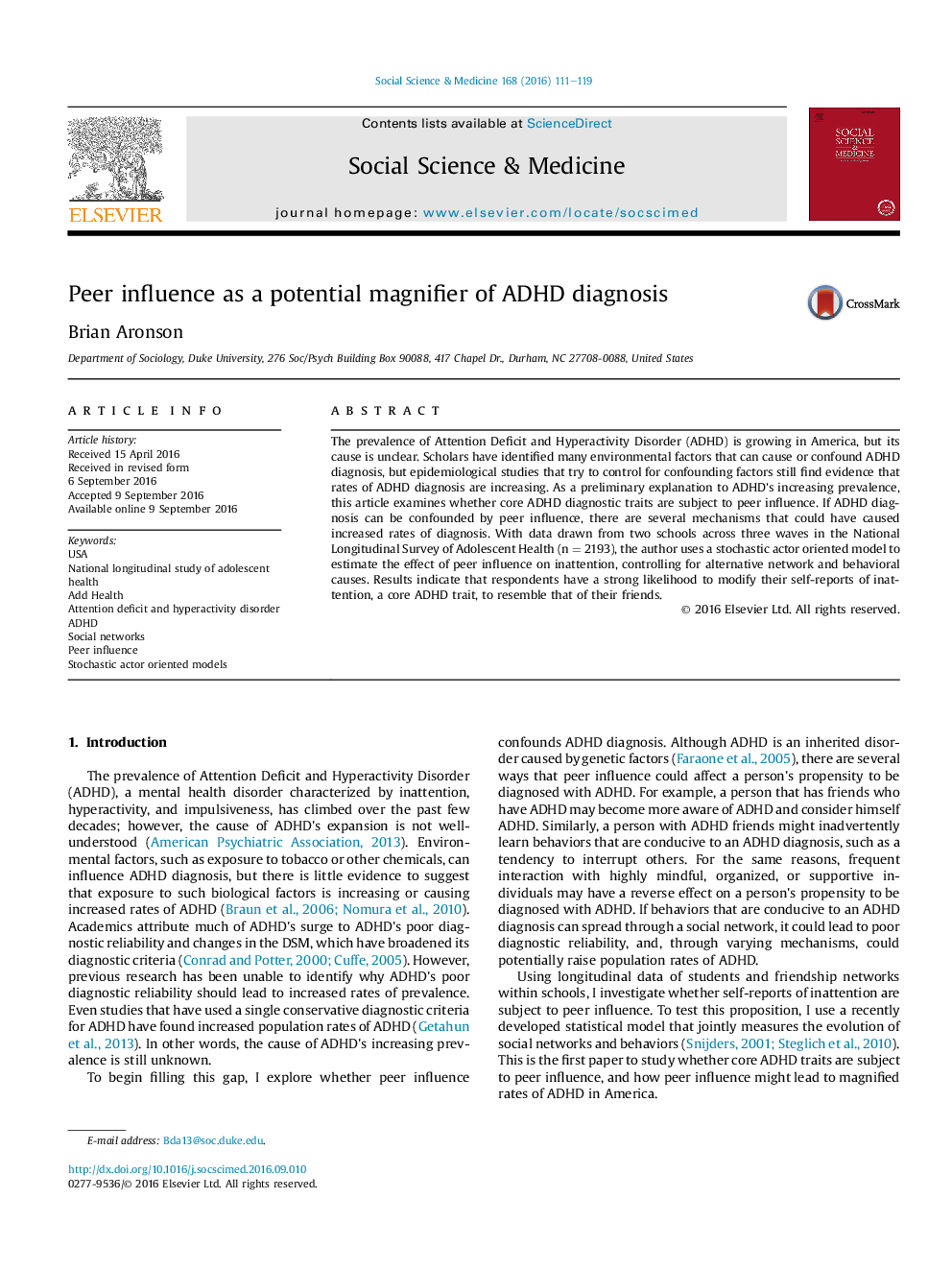| Article ID | Journal | Published Year | Pages | File Type |
|---|---|---|---|---|
| 5046929 | Social Science & Medicine | 2016 | 9 Pages |
•Studies why rates of ADHD are increasing in America.•Measures the evolution of social networks and ADHD behavior.•Finds that inattention is susceptible to peer influence.•Peer influence can confound ADHD diagnosis.•Peer influence might increase rates of ADHD through various mechanisms.
The prevalence of Attention Deficit and Hyperactivity Disorder (ADHD) is growing in America, but its cause is unclear. Scholars have identified many environmental factors that can cause or confound ADHD diagnosis, but epidemiological studies that try to control for confounding factors still find evidence that rates of ADHD diagnosis are increasing. As a preliminary explanation to ADHD's increasing prevalence, this article examines whether core ADHD diagnostic traits are subject to peer influence. If ADHD diagnosis can be confounded by peer influence, there are several mechanisms that could have caused increased rates of diagnosis. With data drawn from two schools across three waves in the National Longitudinal Survey of Adolescent Health (n = 2193), the author uses a stochastic actor oriented model to estimate the effect of peer influence on inattention, controlling for alternative network and behavioral causes. Results indicate that respondents have a strong likelihood to modify their self-reports of inattention, a core ADHD trait, to resemble that of their friends.
